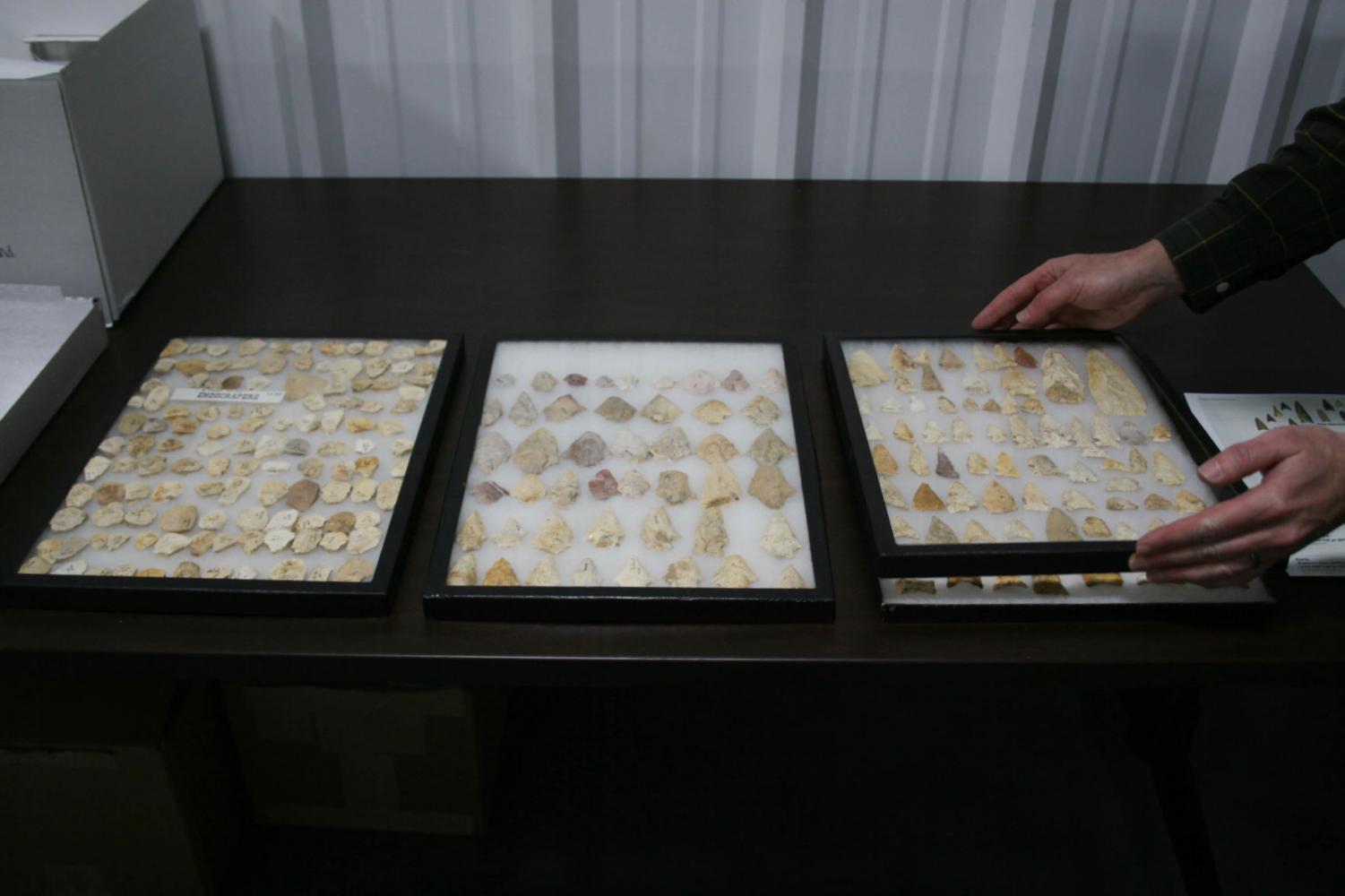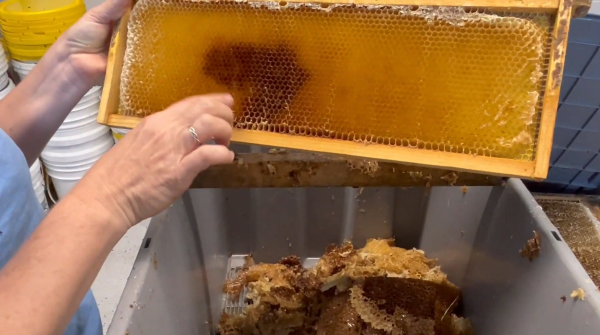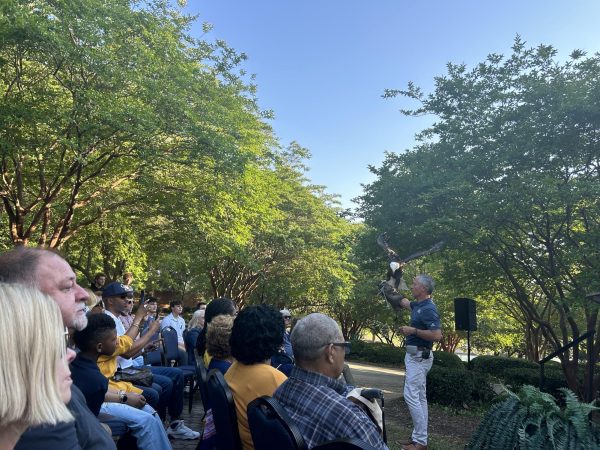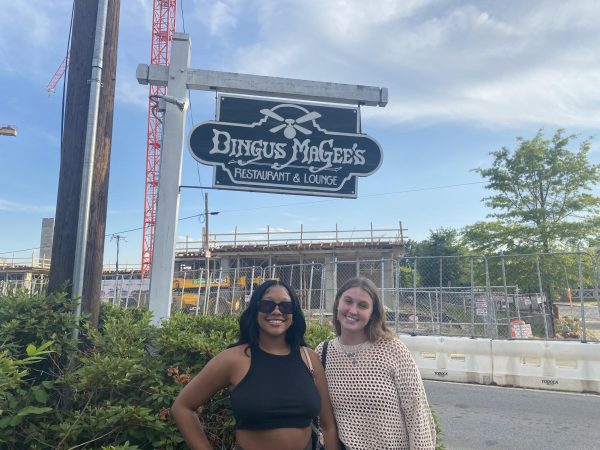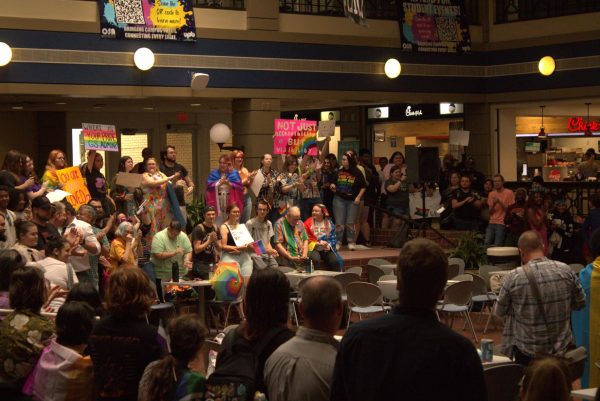Georgia Southern’s archaeological repository uncovers the past
March 21, 2018
When you think of archaeology you may envision Indiana Jones uncovering extravagant artifacts like the Ark of the Covenant, but real life archeology is more concerned with preserving and studying the past.
Conserving the past is exactly what Georgia Southern University is trying to do with its recently built archaeological repository and archaeology laboratories on its Statesboro Campus.
The R M Bogan Repository
GS built The R M Bogan Repository to serve as a regional repository that serves as a place of curation for archaeological materials produced by Georgia Southern University’s Departments of Sociology and Anthropology on both the Statesboro and Armstrong campuses, Matthew Compton, Ph.D., curator of the repository said.
The repository is part of GS’ central warehouse in Statesboro, located at 375 Lanier Dr., and originally opened in May 2017.
The repository is about 6,000 square feet and is home to around 1,700 boxes of materials, mostly focusing on Georgia and its surrounding regions.
“The archaeological collections we hold focus on Georgia and adjacent regions,” Compton said. “The Coastal Plain region of Georgia and South Carolina are particularly well represented among our collections. We currently hold approximately 1,700 boxes (banker’s box size) of archaeological materials and their associated documentation.”
The archeology materials enter the repository in a number of ways. About half of the items were added by GS’ field research activities through its archaeology field school, which is offered as a course in the Spring and Summer semesters.
The repository also receives materials from other institutions that conduct archeology research that lack the proper space or ability to store the materials. These institutions include federal and state agencies and private archaeological firms. All these institutions pay GS a fee to store their findings.
Finally, GS occasionally accept materials from private individuals, but only if the materials are well documented and align with the repository’s mission.
Compton was adamant that the repository does not pay for materials because it encourages site destruction.
“I should note that we do not pay for artifacts or collections nor do we assign monetary values to artifacts,” Compton said. “We avoid this practice so as not to encourage the monetization of artifacts that might motivate site destruction and the loss of information about our shared human heritage.”
About the curator
Matthew Compton came to GS to be the curator of the repository back in July 2016 and he is the first hold the position.
Compton earned his bachelor’s degree in anthropology with a focus on archeology from Appalachian State and his Ph.D in anthropology with a focus on archaeology from the University of Georgia.
Prior to coming to GS, Compton operated his own research firm, focusing on Zooarcheology, the study of animal remains from archaeological sites.
As curator, Compton manages the repository, working to build and maintain GS’ collection and oversees the internal and external use of the materials for the purpose of teaching, research and outreach. Compton also manages the archeology labs found in the Carroll Building.
A few of his duties include:
-
Developing protocols for proper care of the collections
-
Making decisions about what collections to acquire
-
Hosting visiting researchers
-
Answering questions about the collections and their associated records
-
Processing loans
-
Conducting research on the collections
-
Working with potential curation clients
Besides curating the repository, Compton also teaches classes at GS. He teaches classes on archaeological curation, zooarchaeology, foraging to farming and environmental archaeology.
Importance of the repository
The repository serves many important functions for GS.
First, the repository serves as a place of curation for archaeological materials produced by GS. Without the space to store these materials, GS would have to send the materials to be stored somewhere else.
Second, the repository attracts outside researchers and gives GS the ability to loan materials to other researchers.
“By serving as a regional repository for archaeological materials and their associated documentation the facility also gives us a higher profile outside the institution by attracting outside researchers who are interested in using our collections for their own research,” Compton said. “We regularly host visiting researchers and loan materials for research purposes.”
In fact, GS has a researcher coming in the next few weeks to 3D scan some of pottery shards in GS’ collection for us in their research.
The repository also serves as a teaching tool for GS students. Students can get experience in archaeological curation, which is not common in American anthropology programs Compton said.
Finally, the repository allows GS to participate in community outreach and education. Since the repository does not have a dedicated exhibition space, they frequency participate in festival. The repository also loans pieces to the GS Museum for exhibition.
Unique features of the repository
The repository has a few unique features to assist in the curation of archaeological materials.
One feature is the rolling shelves, also called compression shelves, that are used to house the collections.
“We are fortunate enough to have this kind of space,” Compton said. “Most archaeological programs do not ample space for their materials that they curate.”
These shelves are placed on tracks so that they can be moved regardless of how full they are, cutting down on the amount of shelves needed to store materials. The repository currently has 11 rolling shelves that allows it to store 5,280 boxes Compton said. The repository can hold about another 30 selves, which would bring its mass capacity to 19,680
Along with the rolling shelves, the repository has precise climate monitoring equipment that tracks the temperature and relative humidity every hour to ensure proper climate for the curation of archaeological materials.
Camp Lawton
GS’s repository contains artifacts from a the Civil War prison camp, Camp Lawton.
Located in Magnolia Springs, Camp Lawton was built in 1864 and contained over 10,000 prisoners. Its builder, Brigadier General John H. Winder described it as “the largest prison in the world.”
Led by Ryan McNutt, Ph.D, GS became a part of the long term research project at Camp Lawton to uncover how life was for POW’s and the guards that were stationed there.
“For the most part we knew it was out there somewhere but being able to actually locate it and identify where it was, we’ve gotten quite a number of artifacts from there,” Compton said. “It gives us a better idea of what the lives of those prisoners was like.”
In more recent excavations, McNutt has been looking at trying to identify where the guards type areas were located to get an idea of what their daily lives were out at that prison camp.
Items in the collection
The GS repository holds collections that spanning from the Paleo Native American period all the way to the 20th century.
“I like to encourage people to not focus on the ‘things’ or artifacts themselves as much as what they tell us about the people who used them,” Compton said.
Some interesting pieces within GS’ collection are pieces of Stallings Island pottery which is the earliest pottery in North America.
“Right here from along the Savannah River on the South Carolina and also over onto Georgia, dates to about 4,500 years ago,” Compton said.
Other pieces, like ceramic pots with patterns made by wooden paddles, show the movement of a group of people.
“We find pots at different sites sometimes hundreds of miles apart that the same paddle was used,” Compton said.
The repository also contains items that are more culturally sensitive that are held a separate secured room. These items included a Native American urn and bowl used for burials.
Although the repository holds many beautiful artifacts, Compton stressed the importance of not only the artifacts themselves, but of the stories they tell us overall.
“The artifacts are fascinating but what’s interesting to me is what they tell us about people of the past,” Compton said.
More artifacts from GS’s archaeological repository can be viewed here.


